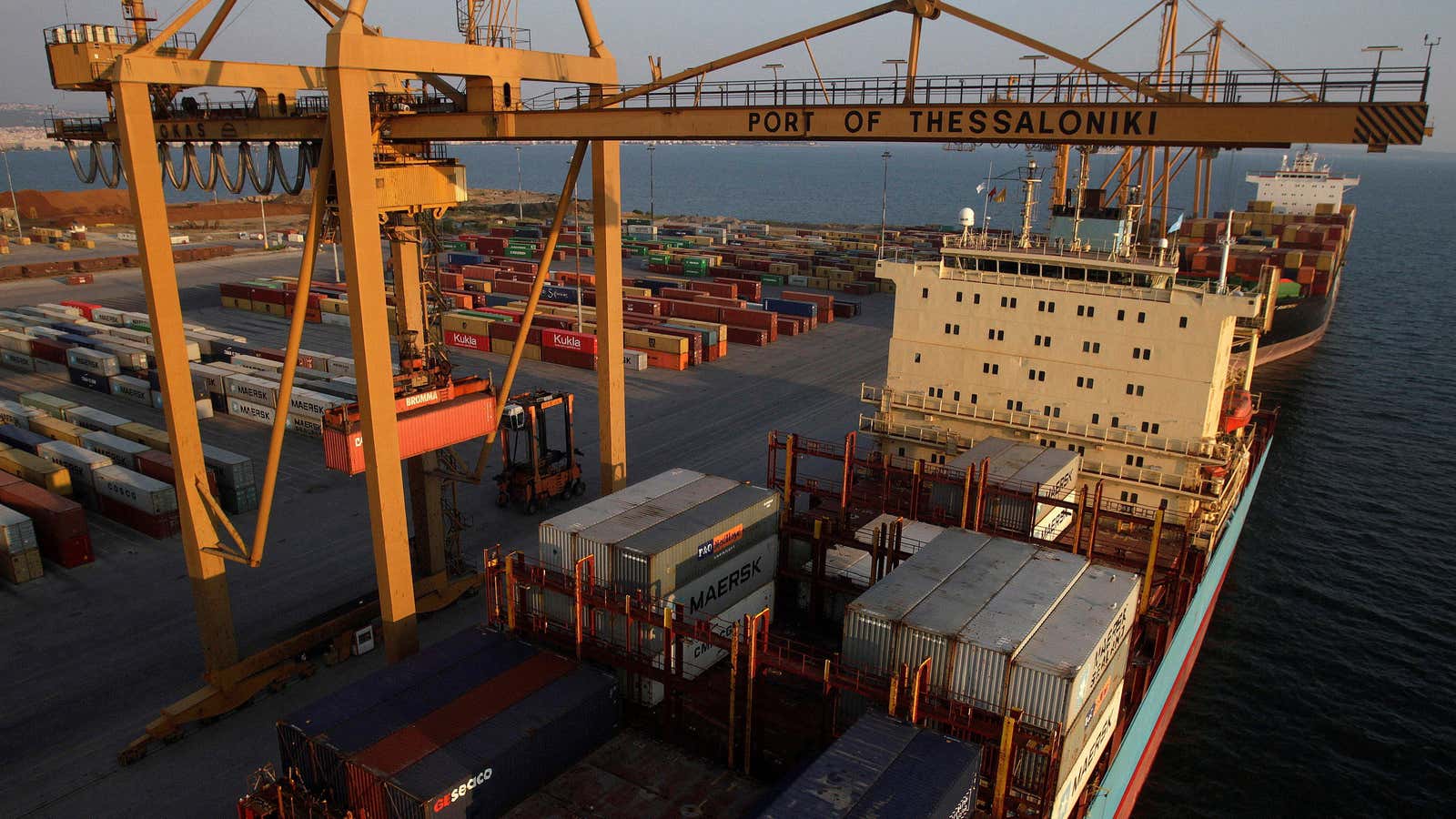Shipping contributes 3% of the world’s annual greenhouse gas emissions, more than the UK and France combined. But despite that share, the industry has been moving slowly to decarbonize, in part because of the complexity of challenge: It requires coordination between all countries with a port and a highly fragmented private sector, where most companies own just a few ships.
In fact, supply chain challenges since the pandemic, including more congestion at ports, means shipping emissions are set to rise significantly this year.
But on Nov. 10, 22 countries at COP26, the UN climate summit in Glasgow, took a significant step toward making low or zero-carbon shipping a real thing. The governments agreed to develop six ocean trade routes that will function as “green corridors” by 2025—proving grounds for maritime technologies that have the potential to decarbonize the industry, like ships running on zero-carbon fuels and modern cargo sails, as well as the port infrastructure, energy supply, and government policies to support them.
The Clydebank Declaration
Called the Clydebank Declaration, the agreement aims to focus the industry on specific maritime corridors, such as from Asia to Europe, and on specific ports in countries where the government has committed to making zero-carbon shipping happen. The process is expected to speed up investment in new technologies and zero-carbon fuels, get such prototype ships on the water faster, and eventually scale up the technologies that work. These pilot efforts can then serve as a blueprint for other trade routes around the world.
“The maritime ecosystem is embarking on a journey to a transformed, zero-emission shipping sector. The task ahead is complex, but not impossible,” says Johannah Christensen, CEO of the Global Maritime Forum (GMF), a think tank.
So far, the countries that have signed onto the agreement include the US (the world’s second biggest exporter), the UK, several European countries including Germany, and the Marshall Islands, a small island nation that has been at the forefront of pushing the shipping industry to decarbonize.
Notably missing is China, which, as the world’s top exporter of goods, is the origin port of many of the world’s busiest trade routes. That doesn’t mean it can’t sign in the future, and last month, China opened the world’s first zero-carbon terminal at Tianjin Port.
How would green corridors work?
At this point, the declaration functions more as a statement of intent, but the Global Maritime Forum published a report this week that offers some insight into what the green corridor concept might look like.
The technology for zero-carbon ships already exists, but it needs to be refined and the ships need to be built. For the ships to function, they would need to be refueled by a network of ports with a sufficient supply of green hydrogen or green ammonia, which are being produced right now in quantities too small to supply the industry, and are too expensive compared to the price of fossil fuels.
Governments can step in with policies, like a tax on carbon emissions, to raise the relative price of marine fuel oil and make the alternative fuels more competitive. Regulations that require companies to lower the emissions from their supply chains will be necessary, as well as enough demand from shippers (the companies that rent space on ships to move goods) to incentivize shipping lines to build these kinds of ships.
While the Clydebank Declaration moves the industry closer to decarbonization, much more needs to be done.
“Today’s declaration is a great first step towards cleaning up our ports, port communities, and the maritime sector,” Dan Hubbell, a campaign manager at Ocean Conservancy, an environmental organization, said in a statement. “We need to see today’s declaration followed up with progress towards strong mid-term measures,” he added, looking ahead to a meeting later this month by the International Maritime Organization, a UN agency, where countries will discuss a target to bring shipping’s emissions to zero by 2050.
The IMO is where shipping’s zero carbon future will be decided, and current targets have been heavily criticized for being in line with global temperatures to rise more than 3°C.
